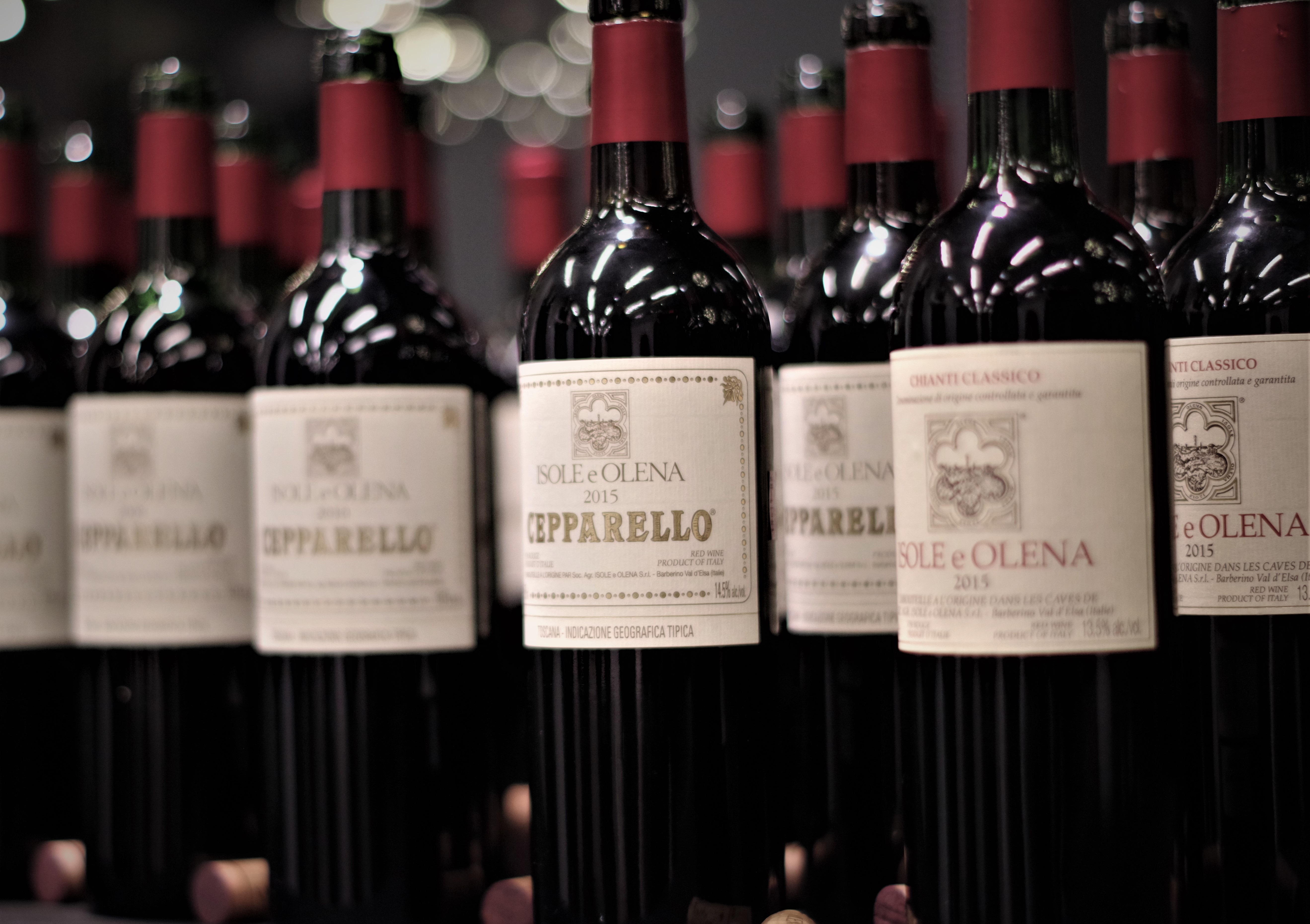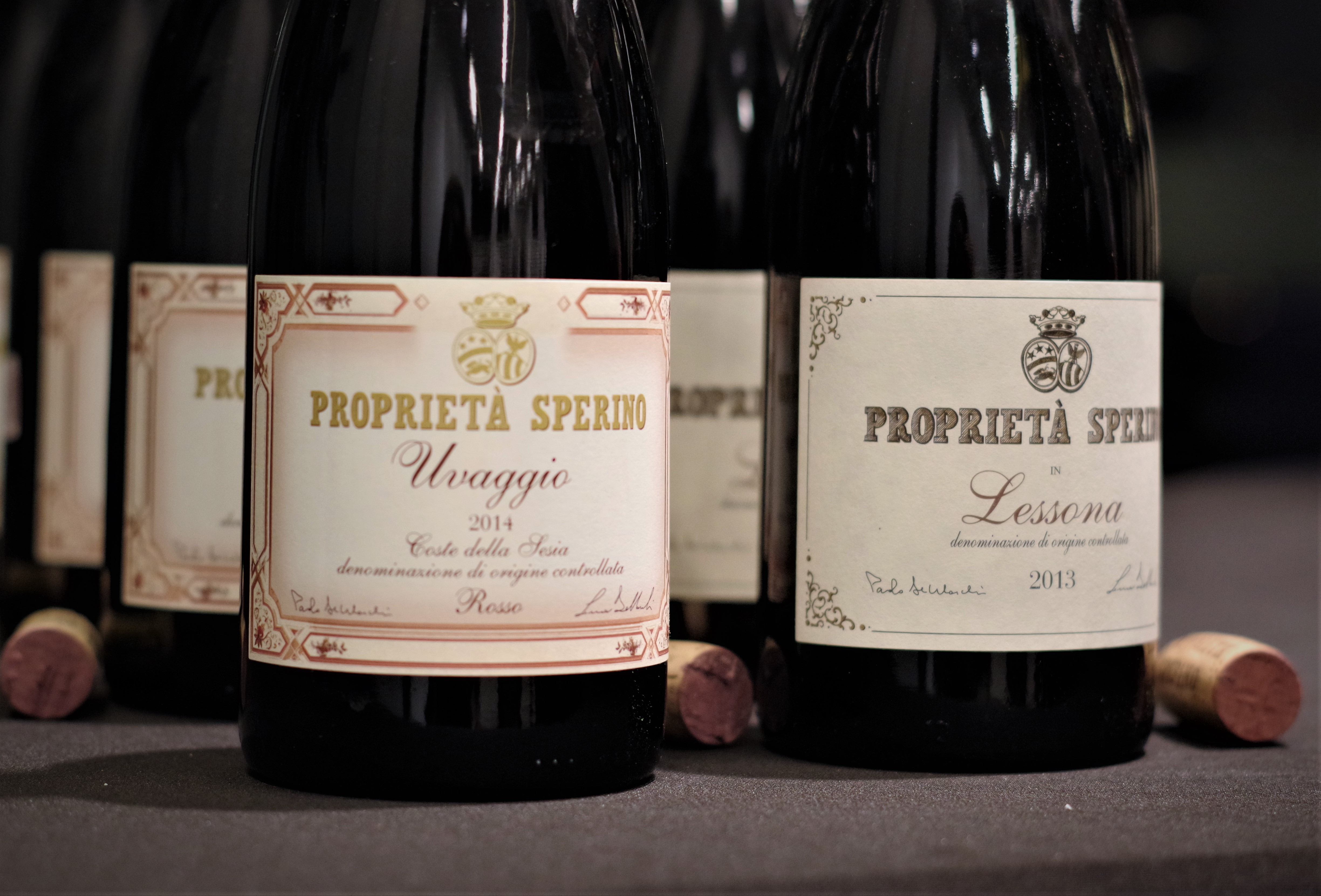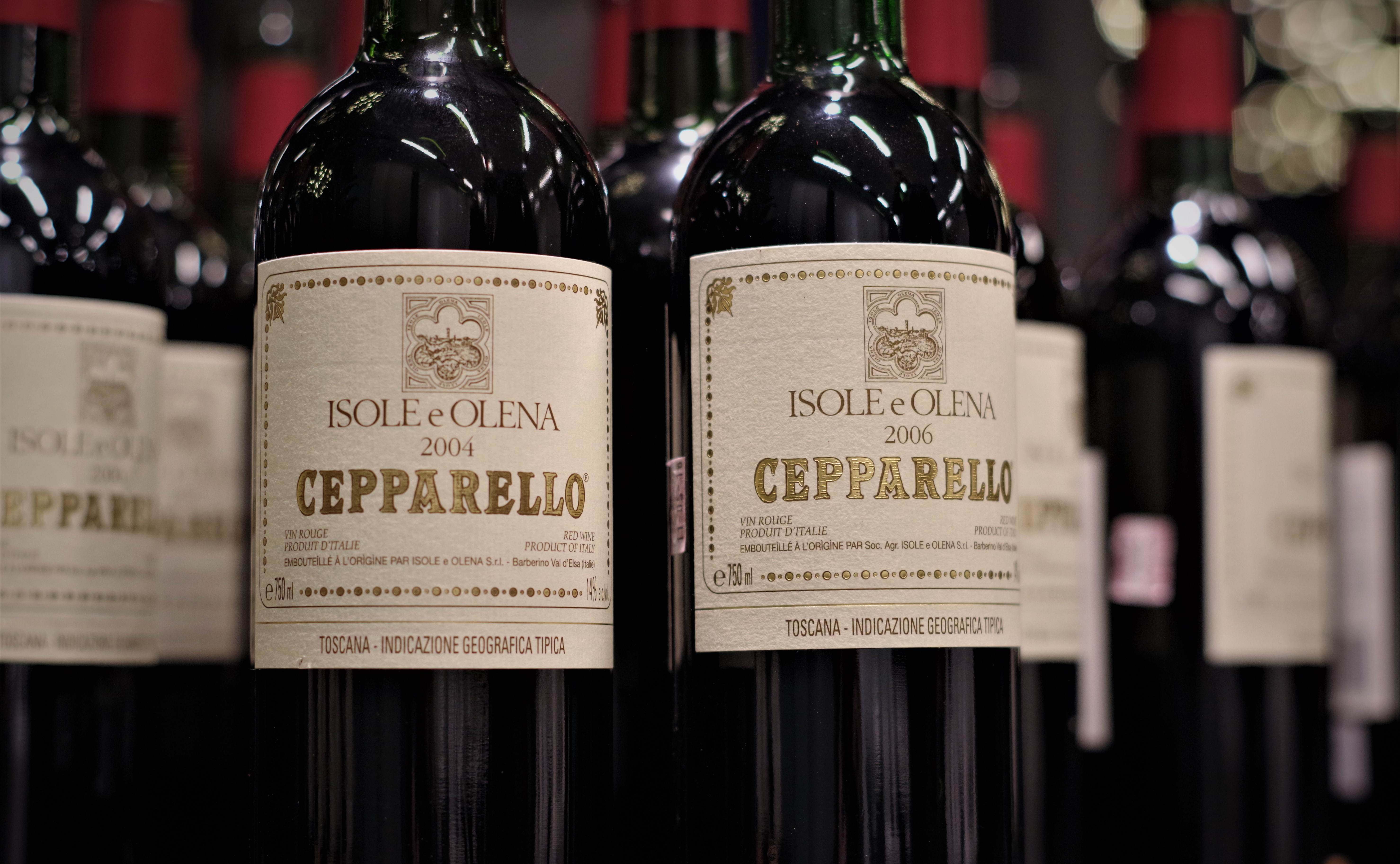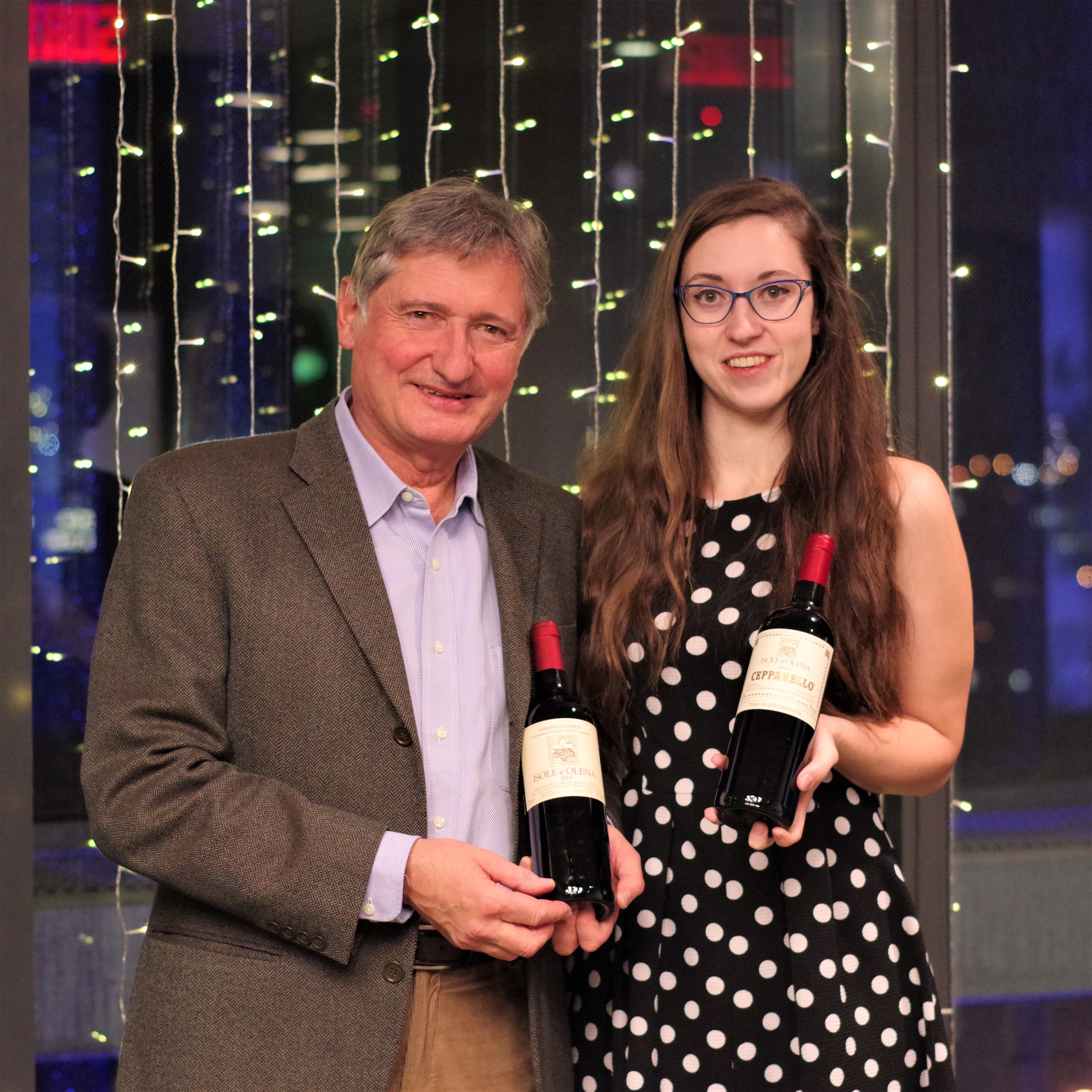Before WWII, Isole e Olena were two separate estates based on a sharecroppers and mezzadria concept. Things have changed when the De Marchi family purchased both estates which were let down and forlorn. This unique location could not have found a more suitable family to take care of it as the de Marchi and especially Paolo De Marchi who actually runs it, has raised the estate to be considered as one of the top small wine producers in the world. It’s a true classic Tuscan producer, and while Paolo did experiment with international grape varieties, he believes in the importance of typicity. Isole e Olena is based on Sangiovese and Canaiolo, local authentic grapes only.
Isole e Olena is based between the Chianti Classico communes of Barberino val d’elsa and Tavernelle Val di Pesa. There’s a lot of talk about confirming and regulating the sub regions in Chianti Classico. However, those two will probably be joined together and united. In two weeks there’s going to be a vote for the new name of the sub-region: maybe Barberino Tavarnelle!!
Cepparello is famous lieu-dits within the estate but also a 100% Sangiovese of the upmost quality. AT the time of creation, this kind of monovarietal could not be labeled within the appellation. Thus, it’s only an IGT wine. A very grand wine made by one of the most passionate producers I have met. Paolo de Marchi is the kind to talk a lot, yet I bet no one would ever get tired of hearing the very best anecdotes of the estates.
Isole e Olena, Chianti Cassico 2015
This Chianti Classico is made of balance and a mature expression of Sangiovese/Canaiolo. A typical expression of the region with fresh cherries, a lively acidity, good intensity, ripe tannins and slight black tea aromas.
Cepparello 2015
The Saq missed the 2014 vintage but now the 2015 will fortunately be available. The 2015 shows a great structure especially a tactile maturity in the tannins. The aromas are extremely appealing of crushed nuts and tree bark.
Cepparello 2010
2010 has grippy tannins and a shaded intensity for now. Sangiovese is such a temperamental grape and this is a good example a Sangiovese that’s getting moody for a while. It should brighten up in a few years.
Cepparello 2008
Great complexity with minty/basilic and black olives aromas. The texture is a lot lighter than younger vintage, it has been integrated but the acidity is still as vivid as it ever was.
Cepparello 2007
2007 marks a definite change in the style. Already from the orange tinted color we notice a bold development. The style is completely evolved with blood orange aromas and lovely fresh taste.
Cepparello 2006
Beautiful bright brick colored wine. 2006 has not evolved in the same way as 2007 has. It’s still strongly textured with a touch of bitterness like black coffee and an impressive youth. It’s delightful, and a great expression of the vintage. The summer was dry, not too warm, and the wine is intense yet not too coarse.
Cepparello 2004
2004 has an impressively deep brick color. It’s like biting in a zesty tangerine, very juicy, yet with a great complexity. This vintage was one characterized by fertility, like never before. You know it’s a special vintage when you have so much crop of great quality.
Lessona – Home of Spanna and the northern side of Piedmont
Proprietà Sperino was a lifelong dream of Paolo de Marchi with his son luca. Having spent his summer with his grand-mother in the region as a young man, he wanted to return to this abandoned land in which he saw tremendous potential. Lessona and the 12 other regions of the north of Piedmont were pretty famous for winemaking before phylloxera. Now, there’s only 16 producers left in the region. Even Paolo’s father could not believe Nebbiolo would ever grow again in Lessona. He would show around the first picked grapes in disbelief. Of course, the north is very different from the south, the soils is of volcanic compound, there’s the proximity of the alps. The winds coming down from the alps gets compressed and the climate is actually warmer/milder than Barolo. Harvest hangs forever and in some vintages grapes are still on the vines when the bright yellow leaves are fallen down in fall.
Uvaggio DOC 2014
Uvaggio means a blend of grapes. It’s acyually a blend of Nebbiolo, Vespolina and Croatina because it’s safe and tough. The blend gives added fragrance and fruitiness to the already quite intense nebbiolo.
Lessona DOC 2013
To have a wine with 14% ABV but still such tannins is a characteristic of northern piedmont. The style is looking for maturity, minerality, finesse and acidity. There’s also a slight salinity that brings everything together. This is the kind of wine that truly reflects its origin.
Une dégustation verticale de Ceparello
Avant la Seconde Guerre mondiale, Isole e Olena étaient deux domaines distincts reposant sur un concept de métayers et de Mezzadria. Les choses ont changé lorsque la famille De Marchi a acheté les deux domaines qui étaient plutôt tristes et abandonnés. Cet endroit unique n’aurait pas pu trouver une famille plus apte à s’en occuper, car la famille De Marchi et surtout Paolo De Marchi, qui le dirige actuellement, ont élevé le domaine au rand de l’un des meilleurs producteurs de petite échelle au monde. C’est un vrai producteur toscan classique et, bien que Paolo ait expérimenté des cépages internationaux, il croit en l’importance de la typicité. Isole e Olena est basé sur le sangiovese et le canaiolo, des raisins authentiques locaux.
Isole e Olena est basée entre les communes de Chianti Classico de Barberino Val d’Elsa et Tavernelle Val di Pesa. Il est beaucoup question de confirmer et de réglementer les sous-régions du Chianti Classico. Cependant, ces deux regions déjà partagées entre chianti DOCG et Chianti classico DOCG seront probablement réunies et unies. Dans deux semaines, il y aura un vote pour le nouveau nom de la sous-région: peut-être Barberino Tavarnelle !!
Cepparello est un lieu-dit réputé au sein du domaine, mais également un 100% Sangiovese de la plus haute qualité. Au moment de la création, ce type de mono cépage ne pouvait pas être étiqueté dans l’appellation. Ainsi, ce n’était qu’un vin d’IGT. Un très grand vin fait par l’un des producteurs les plus passionnés que j’ai rencontrés. Paolo de Marchi est le genre à parler beaucoup, mais je parie que personne ne se lasserait jamais d’entendre les meilleures anecdotes du domaine.
Isole e Olena, Chianti Cassico 2015
Ce Chianti Classico est fait d’équilibre et d’une expression mature du Sangiovese / Canaiolo. Une expression typique de la région avec des cerises fraîches, une acidité vive, une bonne intensité, des tanins mûrs et de légers arômes de thé noir.
Cepparello 2015
La SAQ a raté le millésime 2014, mais le 2015 sera heureusement disponible. Le 2015 montre une excellente structure, en particulier une maturité tactile dans les tanins. Les arômes sont extrêmement attrayants sur la noix broyées et l’écorce d’arbre.
Cepparello 2010
2010 a des tanins adhérents et une intensité un peu embrouillée pour le moment. Le Sangiovese est un cépage de tempérament et c’est un bon exemple d’un sangiovese qui devient morose pendant un moment. Il devrait s’animer d’ici quelques années.
Cepparello 2008
Grande complexité avec des arômes de menthe / basilic et d’olives noires. La texture est beaucoup plus légère que le millésime jeune, elle a été intégrée mais l’acidité est toujours aussi vive.
Cepparello 2007
2007 marque un changement radical dans le style. Déjà de la couleur orange teintée nous remarquons un développement audacieux. Le style est complètement évolué avec des arômes d’orange sanguine et un goût frais et agréable.
Cepparello 2006
Beau vin de couleur brique brillante. L’année 2006 n’a pas évolué de la même manière que 2007. Il est toujours très texturé avec une touche d’amertume comme le café noir et une jeunesse impressionnante. C’est délicieux et une excellente expression du millésime. L’été était sec, pas trop chaud, et le vin est intense mais pas trop grossier.
Cepparello 2004
2004 a une couleur brique impressionnante. C’est comme mordre dans une mandarine, très juteuse, mais avec une grande complexité. Ce millésime était caractérisé par la fertilité, comme jamais auparavant. Vous savez que c’est un millésime spécial quand vous avez une récolte de grande qualité et de grande quantité.
Lessona – La patrie du Spanna et de la partie nord du Piémont
Proprietà Sperino était un rêve de toute une vie pour Paolo de Marchi avec son fils Luca. Ayant passé ses étés avec sa grand-mère dans la région dans sa jeunesse, il voulait retourner sur cette terre abandonnée dans laquelle il voyait un potentiel énorme. Lessona et les 12 autres régions du nord du Piémont étaient réputés pour leur vins avant le phylloxéra. Il ne reste plus que 16 producteurs dans la région. Même le père de Paolo ne pouvait pas croire que le Nebbiolo grandirait à nouveau à Lessona. Il montrait les premiers raisins cueillis avec incrédulité. Bien sûr, le nord est très différent du sud, les sols ont des composés volcaniques et il y a la proximité des Alpes. Les vents provenant des Alpes sont compressés et le climat est en fait plus doux que celui de Barolo. La récolte est à jamais suspendue et, dans certains millésimes, les raisins sont encore présents lorsque les feuilles jaunes vives sont tombées à l’automne.
Uvaggio DOC 2014
Uvaggio signifie un mélange de raisins. C’est un mélange de Nebbiolo, de Vespolina et de Croatina, parce qu’il est sûr et résistant. Le mélange ajoute un parfum et un fruité au nebbiolo, déjà très intense.
Lessona DOC 2013
Avoir un vin avec 14% d’alcohol mais de tels tanins est une caractéristique du nord du Piémont. Le style recherche maturité, minéralité, finesse et acidité. Il y a aussi une légère salinité qui rassemble tout. C’est le genre de vin qui reflète vraiment son origine.




